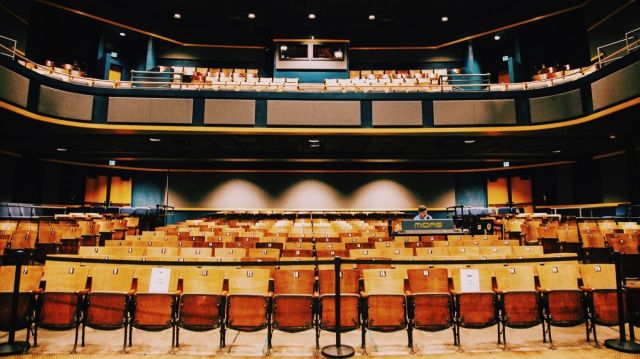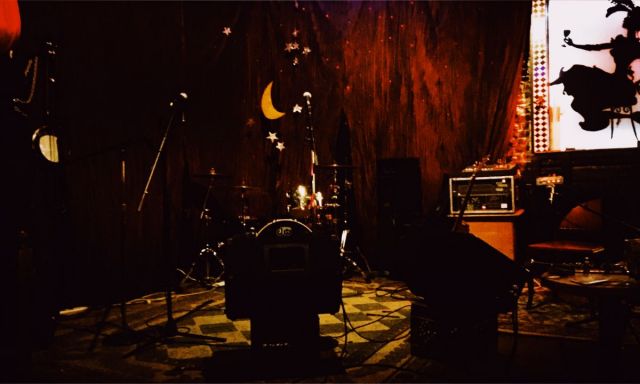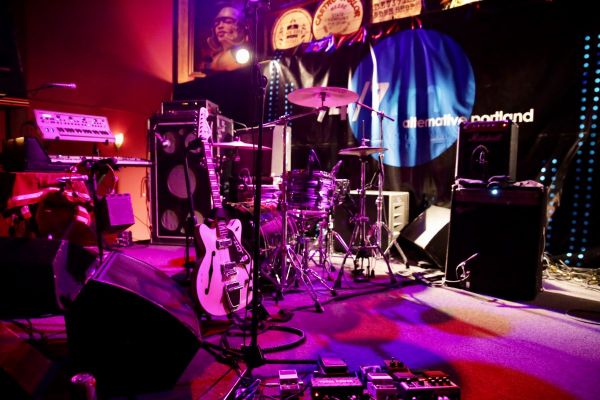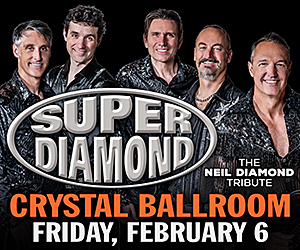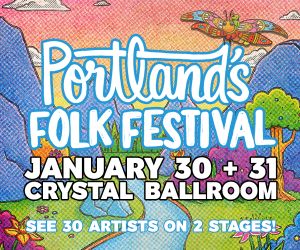Home > Home - Featured
09/22/2020
The Next Stage: Six months after the industry shutdown, Oregon musicians reflect on the return of live performances
By RACHEL GOOD // Several Oregon musicians and their deep feelings about performing and not performing.
Until September 6th, the last time I stood in a music venue was early March. For someone accustomed to seeking out live performances multiple nights each week, this represented an unprecedented drought. Now, the once-common experience seemed surreal: I looked around the McMenamins Kennedy School courtyard and saw masked strangers mesmerized by Lewi Longmire’s acoustic set, pin-drop silent where raucous crowd chatter might once have dominated. It felt new again for all of us. I was positively giddy.
“It has been the greatest blessing to be able to play a few socially distanced shows,” says Longmire. “I definitely consider my relationship with music to be mostly as a live performer, interacting with an audience and the songs in a real-time exchange of energy.” Longmire, a fixture of Portland’s roots-rock scene and an owner of the Laurelthirst Public House, has been impacted by the music industry’s shutdown at multiple levels. That’s required some adjustments to venue operations as well as to his live performances. “We've started hosting livestreams from the empty room a few times per week. We still pay the bands and try to take donations for them, the pub, and the furloughed staff. But the shows are put on for free. We're not directly trying to monetize it so much as just provide music as a service to our community during these strange times.”
Since mid-March, when Oregon Governor Kate Brown ordered the temporary closure of bars and event spaces in response to COVID-19, the local music industry has been at a standstill. Live-stream sets and tightly capped private concerts have been the sole outlets for working musicians, many of whom miss the thrill of playing to a crowd. “I never realized how important it is to have people around while performing,” psychedelic country artist Kassi Valazza says. “You’re left playing for an empty room and the lack of energy is depressing.”
Multnomah County’s Phase 1 reopening has enabled a cautious -- and limited -- return to live performances in the Portland metropolitan area. Venues with outdoor spaces, such as multiple McMenamins establishments, the Alberta Street Pub, the World Famous Kenton Club, the Rosebud Cafe, and the Mississippi Pizza Pub, have worked to create safe conditions for both artists and attendees. “I felt comfortable performing at the Kenton Club, but each situation is different,” says Hearts of Oak’s Nate Wallace. “This was outdoors, with lots of space. I could sing sans mask and not feel like I was spraying droplets on anyone.” Those willing to travel can also find outdoor concert spaces, from the Sou’wester Lodge in Long Beach, Washington, to tourist-friendly spots in Central and Southern Oregon. Tate Peterson of the Resolectrics remembers the strangeness of his band’s late July performance at the Elk Lake Resort in Bend: “It was pretty surreal in a couple of ways: first, because we hadn't played a public show since early March after previously playing two-to-four times each week, and second, because the vibe did seem apprehensive at first and I was constantly worried that someone would start to make a scene regarding masks or try to get too close to me on stage.”
Public safety concerns are never far from top of mind. Oregon Music Hall of Famer Pete Krebs has been careful about the offers he’s taken. “I’ve only been accepting outdoor gigs, and have been very specific in my needs: Stage separated from the audience, masks, and social distancing,” he says. “People seem to get it and go the extra mile to keep the musicians safe.” Sean Badders of the Quick & Easy Boys concurs: “We’ve just been taking gigs that we feel are safe for us but also for the audience -- we don’t want to promote reckless behavior.”
The return of live music has been slow, and has required unique considerations and challenges for many performers. This new model is inherently easier to navigate for solo performers and acoustic acts, due to the limited space and volume limits associated with most outdoor spaces. The recent wildfires and hazardous air quality levels in Portland have resulted in a second wave of venue closures and performance cancelations. And with the rainy season just around the corner, and with no COVID-19 vaccine in sight, venue owners face genuine concerns about the ability to bring live music safely indoors. Many large-scale concerts, tours, and music festivals have been canceled through 2021. “As the weather changes, there will be some restaurants and bars that start hosting indoor seating,” says Longmire. We hope to just watch and see how that goes for folks, and hopefully as soon as there is a sense of how the public (and the government) feels about being indoors in limited capacities, some kind of musical events will be able to happen.”
While the industry shutdown has posed undeniably crushing financial and artistic obstacles for local musicians, some see a few bright spots. “I’m learning more about myself as a musician and why I do this,” Valazza reflects. “Because it’s certainly not to sell products or just play in a room to my computer.” Badders has also been encouraged by the community’s ability to thrive outside of established venues. “There’s definitely a movement of outdoor house/park shows that’s happening in Portland, which has been awesome,” he says. “It reminds me of my early days playing punk and ska music and doing shows wherever you could -- now it’s just being done with world-class musicians.”
Regardless, the music industry’s current challenges have only fueled concert-goers’ appetite for live music. “We are all grateful for the now-rare chance to see live music with friends,” Peterson muses. “I was told on more than one occasion, ‘Thank you for the therapy session,’ and I believe the feeling was mutual.“ This was my experience at the Kennedy School, surrounded by a crowd that was uniformly respectful, appreciative, and generous with both applause and tips. I still can’t envision when we can once again be packed in a basement rock club or swarming festival grounds alongside thousands of other fans. But I do know the music industry is fearless and resilient, and that the community of music lovers will be there with open arms when a safe return to “normalcy” is possible. “People need art and music,” Valazza says. “And they’ll do everything they can to make it happen again.”
Photos by Stephanie Neil.



